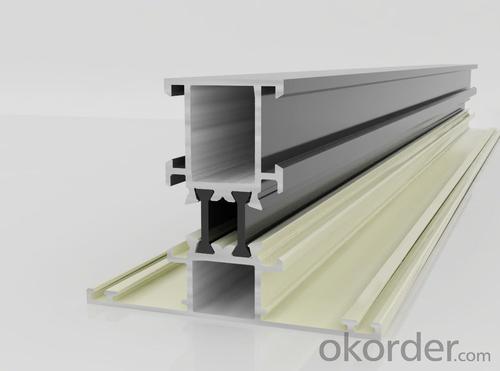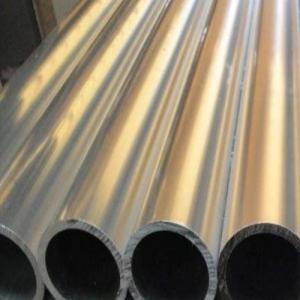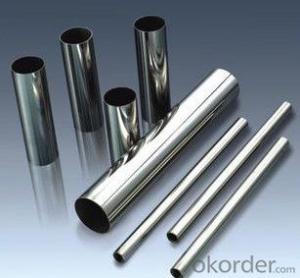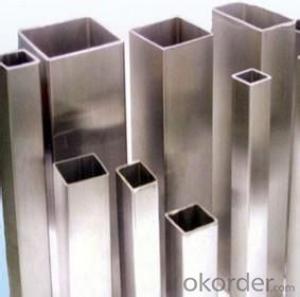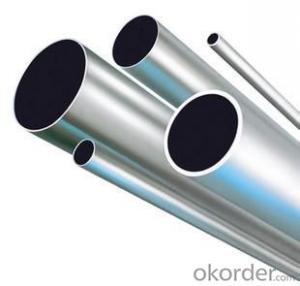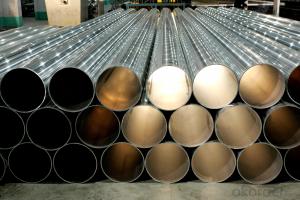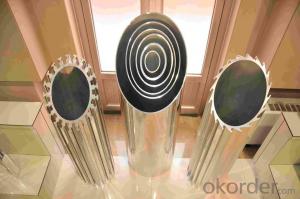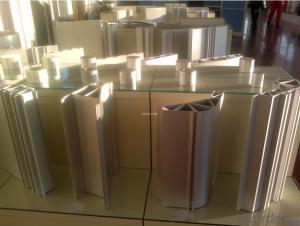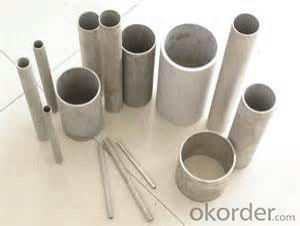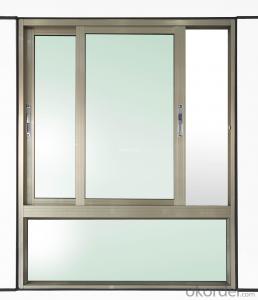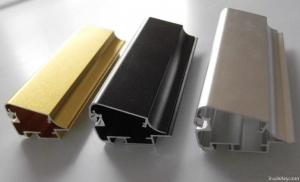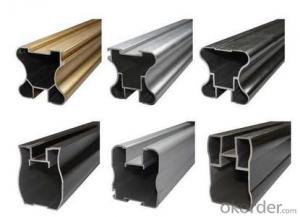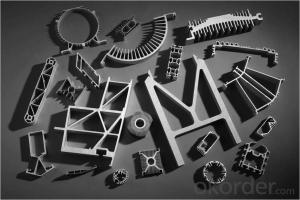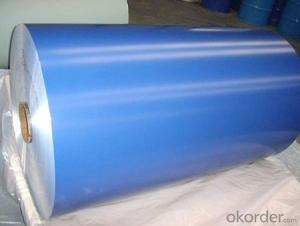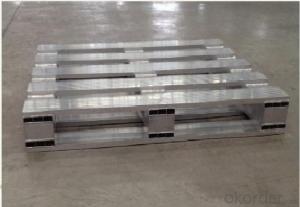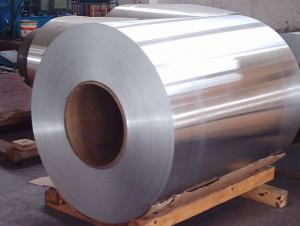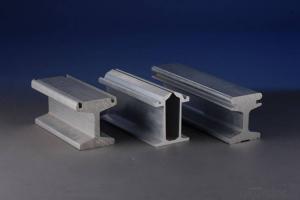Aluminum Pipes - AA6061 Aluminium Profile
- Loading Port:
- China Main Port
- Payment Terms:
- TT OR LC
- Min Order Qty:
- -
- Supply Capability:
- -
OKorder Service Pledge
OKorder Financial Service
You Might Also Like
Product Description:
1 Specifications of Aluminum Profiles 6061-T5
Alloy Number | 6063 6061 6060 and different aluminium alloy |
Temper | T4 T5 T6 or other special status |
Surface available | Mill finish, Anodized, Powder Coating, Wooden transfering, electrophoresis, heat insulation, PVDF, and deep processing |
Thickness: | >0.8mm |
Width: | <300mm |
Standard | GB5237.1-2008 |
Special Specification is available on customer’s requirement
2 Usage/Applications of Aluminum Profiles 6063-T5
Aluminium Profiles are widely used in construction(windows & doors,curtain wall), decoration ( flooring and tiling, kitchen) and industry ( heat sink ).
CNBM produces aluminum profiles which meets the national standard GB5237.1-2008. Our strong quality control term bring you the most-qualified products. And with state-of-the-art equipment, and the state owned company background, we have to say, you will understand why there are so many company choose CNBM to be their supplier.
- Q: Is the tube of LED lamp all plastic tube well or half plastic half aluminium tube?
- The plastic tube is mainly made of non isolated power supply. In order to avoid electric shock, plastic tube is adopted. Which is used with Phi 5 straw hat tube LED. The biggest problem is the heat problem, because the heat all sealed in the tube, unable to escape, life is very serious, coupled with the straw tube had life is very short, less than 2000 hours on the bad.Semi plastic half aluminum LED fluorescent lamps sold on the market are basically the half PC Aluminum Alloy, in the half light of the use of plastic in need not pervious to light and need the half cooling on the use of Aluminum Alloy. The power is placed in the aluminum tube, so that the amount of heat generated by the LED plus the heat output of the power supply is quite large, because the power of the lamp is usually around 20W. If the power is bigger, half of the aluminum tube can not solve its heat dissipation problem.LED is English light emitting diode (light emitting diode) abbreviation, its basic structure is a electroluminescent semiconductor chip light emitting materials, with silver glue or glue curing to the bracket, connecting a chip and a circuit board and then with silver or gold, then sealed with epoxy resin around, to protect the internal core role finally, the installation shell, so the seismic performance of LED lamp is good. Field of application involves mobile phones, desk lamps, household appliances and other daily household electrical appliances and machinery production.
- Q: What are the common applications of aluminum pipes?
- Aluminum pipes have numerous common applications across various industries. Some of the most common uses include plumbing systems, HVAC (heating, ventilation, and air conditioning) systems, automotive components, aerospace structures, marine equipment, irrigation systems, and construction projects. Aluminum pipes are chosen for their lightweight nature, corrosion resistance, and high strength-to-weight ratio, making them suitable for a wide range of applications.
- Q: What are the different insulation options for aluminum pipes?
- There are several insulation options available for aluminum pipes. One of the most common options is fiberglass insulation. This type of insulation is made of small fibers of glass that are woven together to create a blanket-like material. Fiberglass insulation is effective at reducing heat loss or gain in aluminum pipes and is relatively inexpensive. Another option is foam insulation, which is typically made of closed-cell or open-cell foam. Closed-cell foam insulation is denser and provides better thermal insulation, while open-cell foam is more lightweight and flexible. Foam insulation is easy to install and provides good protection against condensation and heat transfer. Another alternative is elastomeric insulation. Elastomeric insulation is made of synthetic rubber and is commonly used for pipes that carry chilled or hot water. It is flexible, easy to install, and has excellent thermal insulation properties. Elastomeric insulation is also resistant to UV radiation and moisture, making it suitable for outdoor applications. Additionally, reflective insulation can be used for aluminum pipes. Reflective insulation consists of a layer of aluminum foil that is attached to a backing material. This type of insulation reflects radiant heat away from the pipe, reducing heat gain or loss. Reflective insulation is lightweight, easy to install, and can be used in both indoor and outdoor applications. Finally, there are also mineral wool and ceramic fiber insulation options available for aluminum pipes. Mineral wool insulation is made of natural or synthetic fibers and provides good thermal and acoustic insulation. Ceramic fiber insulation is made of high-temperature materials and is suitable for pipes that carry extremely hot substances. Ultimately, the choice of insulation for aluminum pipes depends on factors such as the desired level of thermal protection, the environment in which the pipes are located, and the specific requirements of the application. It is important to consider these factors and consult with professionals to determine the most suitable insulation option for aluminum pipes.
- Q: What are the typical pressure ratings for aluminum pipes for HVAC systems?
- The pressure ratings of aluminum pipes utilized in HVAC systems can differ based on the particular usage and industry norms. Nevertheless, pressure ratings for aluminum pipes in HVAC systems usually span from 150 psi to 500 psi. These ratings guarantee the aluminum pipes' ability to endure the pressure and strain linked with HVAC system operation, encompassing the movement of refrigerants, air, and other fluids. Consulting industry guidelines, manufacturer specifications, and relevant building codes is crucial for determining the suitable pressure ratings for aluminum pipes in HVAC systems.
- Q: External diameter 80mm, diameter 23mm, length 500mm, want to use iron pipe to do external mold, internal mold with iron pipe or solid iron rod processing into taper column (and spray boron nitride release agent), do not know such a practice, OK? In this mode with the taper approach in the aluminum liquid after solidification can easily remove aluminum (because the coefficient of thermal expansion than iron, I am afraid after cooling tubes will (lock core) trouble experienced teacher for advice! Thank you! StopWell, I'll make a small tube of plaster. If the inner mold is not working, will it be stuck together with the aluminum parts? It's not good to clean it
- I think this kind of thing, buy a diameter of 80mm long 500mm aluminum bar, directly drilling a 23mm hole is not good? Aluminum soft, drilling is very easy.
- Q: Can aluminum pipes be anodized for improved corrosion resistance?
- Yes, aluminum pipes can be anodized for improved corrosion resistance. Anodizing is an electrochemical process that creates a protective oxide layer on the surface of the aluminum. This oxide layer is highly resistant to corrosion and can greatly enhance the durability and lifespan of the aluminum pipes. Anodizing also provides additional benefits such as increased hardness, improved adhesion for paints and coatings, and enhanced aesthetic appearance. The anodized layer can be dyed in various colors to achieve a desired look. The process involves immersing the aluminum pipes in an electrolyte solution and passing an electric current through it, which causes the formation of the oxide layer. Overall, anodizing is an effective and widely used method to enhance the corrosion resistance of aluminum pipes.
- Q: How do you weld aluminum plate and aluminium tube?
- Before determining and selecting the welding process for aluminium tubes and aluminium sheets, the following matters shall be determined:1. aluminum tube and aluminum plate metal material grade, according to your aluminum tube and aluminum plate material performance, joint use conditions and corrosion resistance, choose welding materials;2. aluminum tube and aluminum sheet metal properties;3. mechanical properties or strength, tensile strength and shear strength required for welded joints;4. welding joint working conditions, such as corrosion resistance.According to the above characteristics, choose the welding method for aluminum pipe and aluminum plate. At present, the main methods of welding aluminium tube and aluminium plate are:1. high frequency induction brazing: high frequency induction heating is used to melt the solder. The cost is low, and the use is convenient. At present, this process is used in many industries to braze the aluminum tube and aluminum plate;2. diffusion welding: generally used rarely, mainly for surface bonding;3. flame brazing: lower cost.
- Q: The aluminum pipe in the fridge is leaking. What should I do to fill it up?
- With good brothers gluing, 1; polished by voile. 2; with good brothers glued on the line, remember a few times glue.
- Q: Are aluminum pipes suitable for architectural purposes?
- Yes, aluminum pipes are highly suitable for architectural purposes. Aluminum is a versatile and lightweight material that offers numerous advantages for architectural applications. Firstly, aluminum pipes have excellent corrosion resistance, making them ideal for outdoor structures that are exposed to varying weather conditions. They are resistant to rust and other forms of degradation, ensuring durability and longevity of the architectural design. Secondly, aluminum pipes can be easily fabricated and customized to meet specific architectural requirements. The material can be easily shaped, welded, and joined, allowing for the creation of intricate and complex designs. This flexibility enables architects to explore creative possibilities and achieve unique architectural aesthetics. Additionally, aluminum pipes have a high strength-to-weight ratio, meaning they are strong and sturdy while remaining lightweight. This makes them easier to transport, install, and maintain. The lightweight nature of aluminum also reduces the load on the overall structure, resulting in cost savings in construction materials. Moreover, aluminum pipes are recyclable, making them an environmentally friendly choice for architectural purposes. The material can be recycled repeatedly without losing its properties, reducing waste and minimizing the environmental impact of construction projects. Lastly, aluminum pipes offer a wide range of finishes and colors, allowing architects to achieve the desired appearance and aesthetic appeal. They can be anodized or coated, providing additional protection against corrosion and enhancing the overall visual appeal of the architectural design. In conclusion, aluminum pipes are highly suitable for architectural purposes due to their corrosion resistance, versatility, strength, lightweight nature, recyclability, and aesthetic options. These qualities make aluminum pipes an excellent choice for a wide range of architectural applications, from structural support to decorative elements.
- Q: 1100 what's the match between the aluminum material and the material? Thank you
- 1100, the material is pure aluminum, if you want to match, you can choose the 1 Department of aluminum.
Send your message to us
Aluminum Pipes - AA6061 Aluminium Profile
- Loading Port:
- China Main Port
- Payment Terms:
- TT OR LC
- Min Order Qty:
- -
- Supply Capability:
- -
OKorder Service Pledge
OKorder Financial Service
Similar products
Hot products
Hot Searches
Related keywords

